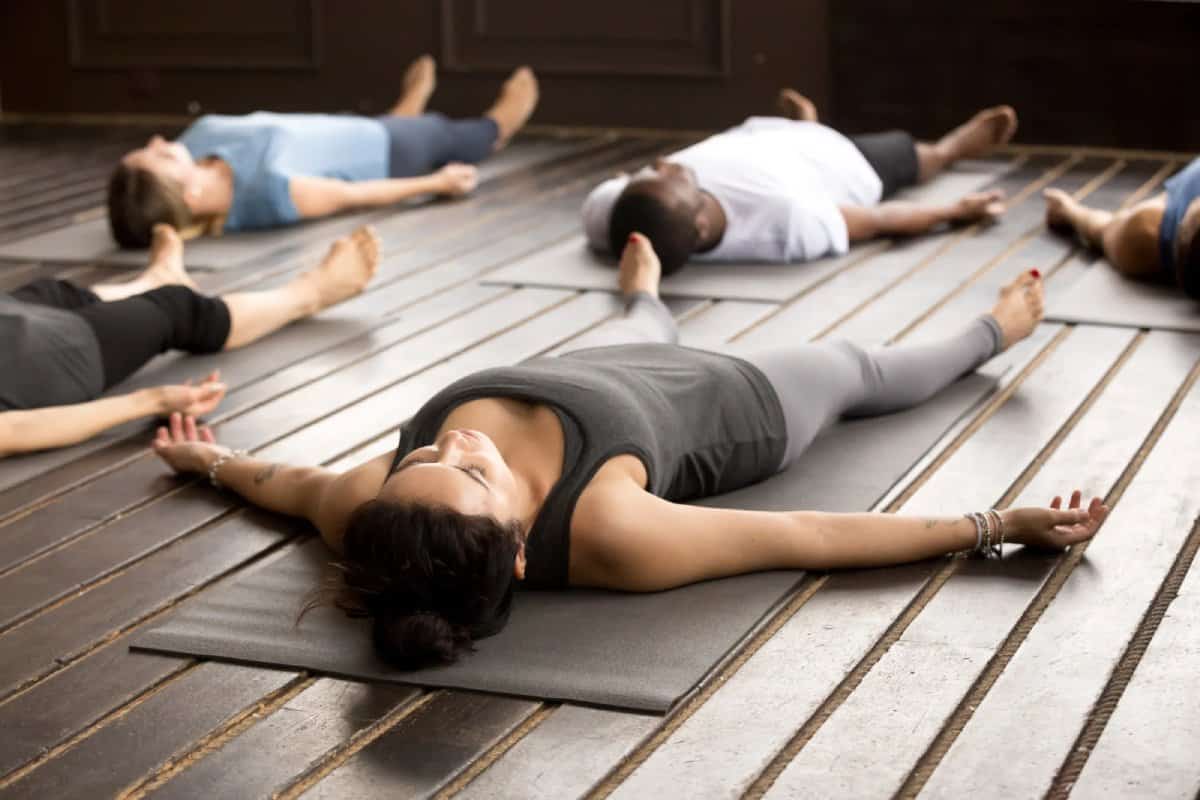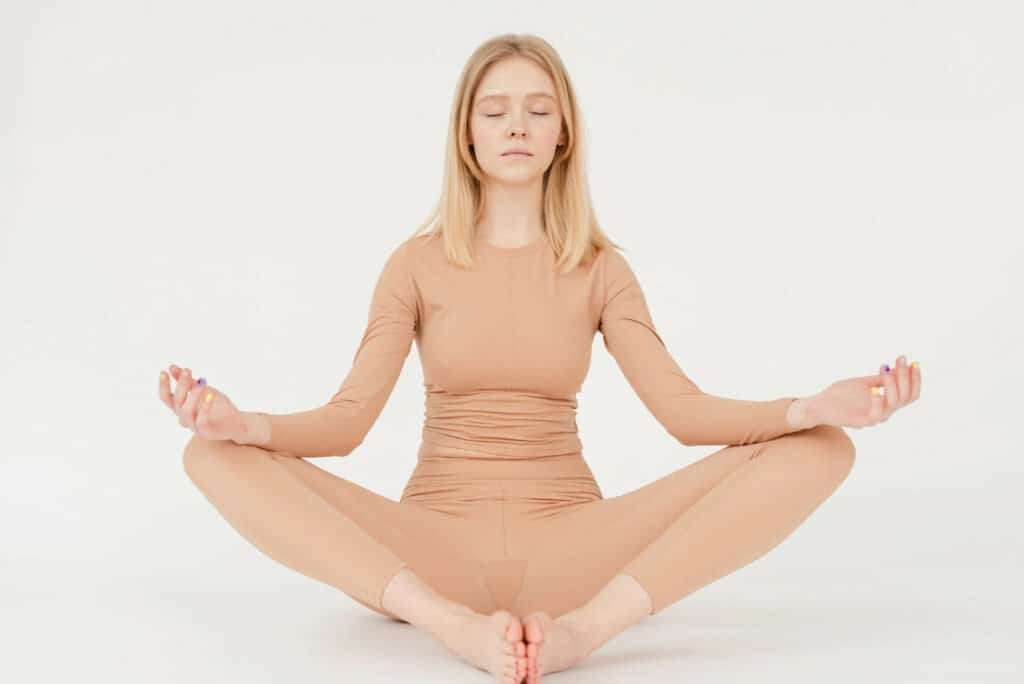How to Transcend Trauma using the Principles of Yoga
The post How to Transcend Trauma using the Principles of Yoga appeared first on The Yoga Nomads.

Many people are consciously or unconsciously suffering from the effects of trauma in their life.
Using yoga for trauma release is an effective option to help nourish the nervous system and to work towards healing trauma. This is because yoga embraces the essence of unity, with the aim to create harmony and transcendence throughout the body, mind and soul.
Here we will look at what trauma is, how to heal trauma, how to find a trauma informed yoga class, and how to incorporate the principles of yoga into your trauma healing journey, so that harmony can be restored.
What is Trauma?
Trauma is the after-effect of exposure to an incident or series of events that are life threatening or emotionally disturbing. It is caused when we are unable to release blocked energies or to fully experience and process the physical and emotional reactions from the hurtful experience.
The lasting effects of trauma affect an individual on many levels including mental and physical health and social, emotional and spiritual wellbeing. Research from trauma expert Bessel Van der Kolk indicates that “trauma interferes with the brain circuits that involve focusing, flexibility, and being able to stay in emotional control. A constant sense of danger and helplessness promotes the continuous secretion of stress hormones, which wreaks havoc with the immune system and the functioning of the body’s organs.”
Long term trauma that goes unacknowledged can develop into Post Traumatic Stress Disorder (PTSD) and people with PTSD are at an increased risk for chronic disease and taking part in health-risk behaviors.
Healing Trauma
Trauma survivors must first acknowledge that they have been unfairly and unjustly hurt by a traumatic experience. They are also advised to seek professional help to support their mental health journey.
To promote healing, many trauma survivors need to understand how people’s brains and bodies respond to trauma. Untreated trauma leads to a long-term build up of toxic stress, which in turn creates a number of negative symptoms including nervous system disorders, depression, anxiety, a shallow breathing pattern, pain, and an altered ability to feel safe in the world.
Judith Herman, author of Trauma and Recovery, says that “The core experiences of psychological trauma are disempowerment and disconnection from others. Recovery, therefore, is based upon the empowerment of the survivor and the creation of new connections.”
Empowerment and new neural connections can be made through the practice of yoga, and this is where trauma informed yoga comes into play.
Understanding your Sympathetic Nervous System
The autonomic nervous system is divided into two parts. There is the sympathetic nervous system is the part of us that switches on our adrenaline and activates our fear response. It is commonly known as fight and flight mode. The other part is the parasympathetic nervous system, our relaxation response and is commonly known as rest and digest mode.
A healthy autonomic nervous system switches between these two states according to a set of outer triggers and emotions. But a nervous system that has experienced trauma, spends a lot of its time in a sympathetic response. Even in a safe place, traumatized people will have their fight or flight response active.
To understand this response in the body, it is important to build self awareness and to learn to stay present. Utilizing tools and techniques that will help you to move into deep relaxation is the key to re-regulating your nervous system. We will take a look at how you can create a safe space in your body through using yoga.
How to use the principles of yoga for Trauma Release
Yoga consists of eight primary principles that were first classified in Patanjali’s Yoga Sutras. These core principles are described as the eight limbs of yoga, and when practiced, are said to lead to Moksha – liberation.
The ancient yogis were talking about liberation from the mind and body and feeling free in their soul. But, we can use these principles to assist in liberation from trauma, and for creating a sense of safety in the moment that traumatic memories arise.
These eight principles are:
Yamas – the external standards of yoga that bring integrity and ethics to one’s life, both on and off the yoga mat. They consist of Ahimsa (nonviolence), Satya (truthfulness), Asteya (non-stealing), Brahmacharya (withdrawal of the senses) and Aparigraha (Non-greediness). These Yamas can be used in the sense of being kind and truthful to yourself as you work through the ways in which trauma affects your life. Niyamas – the suggested self-disciplines and personal practices of yoga. The Niyamas are Saucha (cleanliness), Santosa (contentment), Tapas (spiritual practices), Svadhyaya (study of one’s self) and Isvara pranidhana (surrender and trust in a higher being).Asana – the yoga poses that you see during a yoga class. Each asana has a certain effect on the body and the mind. Choosing specific asanas will assist in opening the body for releasing symptoms and feelings associated with trauma. Pranayama – breathing exercises that affect the body and mind. They can be used to reduce stress, release tension and change heart rate variability. Working with the breath is an effective treatment in trauma sensitive yoga settings.Pratyahara – withdrawal from the senses. This is focused on leaving the outside world to dive into your inner world. This helps to develop self awareness, and to better understand complex trauma. Dharana – the step before meditation. It is about developing a high level of concentration. This can be used in yoga practices to bring presence and to assist trauma survivors to come back to their bodies in moments of dissociation or distress.Dyana – meditation or contemplation. This stage of yoga practice is about seeing from a clear mind and with a new perspective. This is important in healing trauma for it brings clarity to past events and provides a way to move forward.Samadhi – union, complete harmony and transcendence. It is said to be the ultimate goal of the yogi, for it brings mind, body and soul into a state of completeness. In regards to trauma sensitive yoga, we can see samadhi as the goal to be in balance and harmony with one’s self.Trauma Informed Yoga
It is possible to incorporate these yogic principles into a yoga practice during a trauma informed yoga class. Trauma informed yoga is a specific approach by trained yoga teachers that considers confidentiality, developmental psychology and neuroscience and neurobiology. This type of yoga teacher understands the importance of informed consent, safety, trust and transparency.
A trauma informed yoga teacher ensures that all feelings are heard and respected, and is trained to deal with fear, stress and physical and mental pain that may arise during class. Trauma informed yoga is designed to create an environment where participants feel safe and can express all of their emotions.
Right now, only small scale studies have been done to suggest that trauma informed yoga can support those with post traumatic stress disorder. But these studies have shown promising results. A 2021 study of military women with a history of trauma reported improved symptom severity, diet, exercise, alcohol use, sleep, and pain and reduced medication use; after trying a trauma informed yoga practice.
How to find a Trauma Informed Yoga Teacher
Trauma informed yoga teachers take special training to facilitate both private and group setting classes. These teachers understand that they are not just guiding a yoga class, but they are guiding someone’s nervous system and personal experiences. They understand how the yoga postures can create a number of physical sensations and mental symptoms.
To ensure that you attend the right practice for your healing journey, you can reach out to your local yoga studio and enquire as to which teachers have completed an extra trauma informed yoga teacher training. Yoga studios and teachers who practice yoga in its true form, will consider mental health and trauma a serious issue, and will be able to support you through yoga as a healing modality.
You can also search online for trauma informed yoga teachers in your city, or take a look at these resources:
Yoga AllianceTrauma Center Trauma Sensitive YogaExhale to InhaleKripaluWarriors at EaseWhere is Trauma held in the Body?
If you are a trauma survivor, it is important to get to know your body. A body affected by trauma stores the toxic stress of the event in different parts. The most common body parts that store trauma are the pelvis and hips, the diaphragm, the throat, jaw, neck and shoulders. These are parts of the body that hold physical stress, pain and a range of emotions such as anger, fear, depression and anxiety.
The author of Your Body Keeps the Score, Bessel Van der Kolk, has spent a lifetime of research on how trauma is stored in our bodies. Van der Kolk suggests that a range of therapeutic interventions are needed to help process trauma. These include neurofeedback, theater, meditation, play and yoga. Support from a therapist is also a key part of the healing journey.
Yoga Poses to Release Trauma
Working with yoga poses can mean doing one simple pose or creating a sequence to link a few trauma releasing poses together.
Here are some beneficial poses to try:
Baddha Konasana:
Baddha konasana (butterfly pose) works on creating space in the hips and pelvic area for old memories, thoughts and experiences to be released.
To create this shape, sit with your knees bent and feet planted on the floor. Then drop your legs out to the side, keeping the knees bent, and connect the soles of your feet together. Allow your back to be straight with the crown of your head extended toward the sky. Hold your ankles or let your hands rest on your thighs.

The reclined version, supta baddha konasana involves lying down on your back, with a straight spine and allowing the front of your body to be open and free.
Bidalasana and Lion’s Breath:
For the throat and jaw, working with bidalasana (cat/cow pose) in combination with lion’s breath is a powerful technique to release tension. Come to a kneeling position and then stack your hands under your shoulders. As you inhale, you can move through cat pose, curling the spine, tucking your chin to your chest and creating a lock in the throat.Then as you exhale, drop the belly down, arch the spine, and lift your head, open your jaw and exhale with force, letting the tongue hang out. Repeat this five to ten times or as long as it feels comfortable for you.
Urdhva Mukha Svanasana:
Another great pose for opening the throat and stretching the front of the neck is urdhva mukha svanasana (upward facing dog). This opens the heart space as well, encouraging one to open up stored emotions and to let them flow out.

Neck and Shoulder Sequence:
When it comes to the neck and shoulders, you can physically feel the stress that has built up here. It often creates headaches, backaches and total body discomfort. To stretch the neck and shoulders. Try simple shoulder rolls, and stretching the next side to side. You can also try eagle arms by intertwining your arms, and dropping the elbows to create a great stretch across the back of your body.
Try a neck and shoulder sequence with Adrienne:
A Trauma Informed Sequence:
There are a number of yoga poses that will also support trauma release, especially folded poses such as balasana (child’s pose), paschimottanasana (forward fold) and uttanasana (standing forward fold). You will get to practice these, and many more in a trauma informed yoga class or try an online session here:
Here is a 30 minute sequence for an online Trauma Informed Yoga Class by Breathe and Flow
It is important to note that during a yoga session, trauma may be released in tears, anger,, shaking, frustration and other emotions. Make sure you talk to your yoga teacher or a trusted friend or therapist after the class too, to help with the healing and trauma expression process.
Breathing exercise for Trauma Release
The diaphragm is the muscle that controls our breathing patterns. Studies have shown that the way we breathe can affect our levels of stress and anxiety in our bodies. This is where yogic pranayama (breathing techniques) can support the body.
In moments of stress, focusing on your breath can be an instant remedy. You can drop into a quick and simple meditation by following the flow of breath in and out of your nostrils. You can also add a count to your breath, for example, breathing in for the count of four and breathing out for the count of eight. When the exhale is longer than the inhale, the parasympathetic state (rest-and-digest) is activated and it’s a direct signal to your body to tell it that you are safe.
Using the breath as a tool for trauma, is a subtle practice that can be done anywhere, either at home, or discreetly in public, making it an effective practice to bring you back to a place of safety and wellbeing.
If you want to experiment with other pranayama techniques, you can try Nadi Shodhana. This alternate nostril breathing practice supports parasympathetic activity and improves wellbeing. A 2012 study also showed that it has the ability to lower one’s heart rate and respiratory rate immediately.

Increasing Well Being for Trauma Survivors
Well being is not just the absence of trauma, disease or imbalances, but it is a greater sense of purpose, harmony, health and connection in one’s life. To bring a sense of safety and trust to trauma survivors, it is important to approach their situation with individuality and compassion.
Whether you have suffered from trauma or you know trauma survivors, you can share the benefits of yoga as an option for them to consider for the future. In combination with a therapist, using yoga as a way to release stored trauma from the body can be a path to true wholeness and healing.
Frequently Asked Question:
How does yoga impact people who have experienced trauma?
Trauma is the stored residue of stress in the body that resulted from a traumatic event. Traumatized people are afraid of their own emotions and feelings and their breath is shallow. Yoga provides a safe space for people to open up to feeling new sensations, to deepen their breathing and to decrease stress, allowing people to befriend their bodies and release the past.
What can I do when trauma shows up during a yoga class?
Trauma can present as shakiness, dissociation or distress. If this happens during a yoga class,try to return to the present moment through focusing on your breath, focusing on a body part that feels safe, focusing on your yoga mat or another object in the room that feels safe to you, or moving into a different posture, such as a child’s pose. You are also allowed to leave the room if you feel that you need a break.
Should I start with a group class or a private session?
Depending on how comfortable you are in your body, a trauma informed group class should be safe to try. Make sure you tell the teacher about your situation before you start your session, so that they know to take extra care not to push you over your limits.
If you feel as though you are triggered often and really uncomfortable in your body, it may be best to start with a private session where you can talk with your teacher throughout the poses.

 AbJimroe
AbJimroe 































